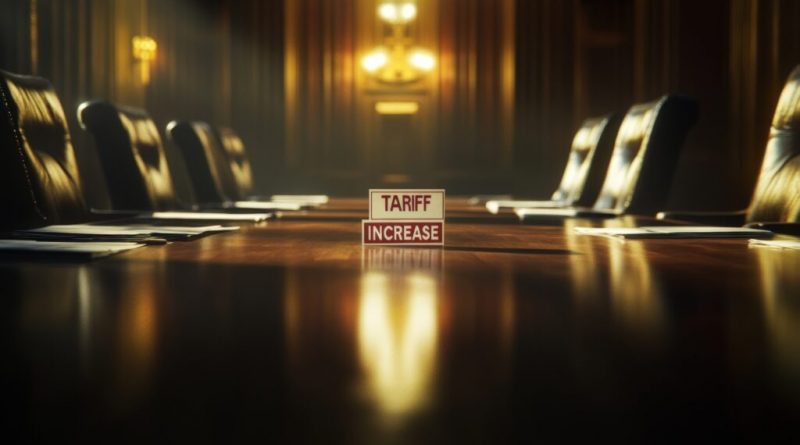Trumpenomics: Achieving Growth through Disruptive Strategies
The economic agenda of US President Donald Trump is emerging through bold, executive-driven reforms geared towards reindustrializing the United States, restoring fiscal strength, and reaffirming national sovereignty in international trade.
While some critics label it as chaotic or protectionist, Trump’s approach is better perceived as a calculated reset, leveraging disruption to stimulate long-term economic revitalization.
ADVERTISEMENT
CONTINUE READING BELOW
Read:
Chaos reigns in DRC as Trump aid cut affects healthcare
US Pepfar reduction ends essential HIV programme for orphans
USAID official instructs staff to destroy classified documents
With extensive tariffs, a government-wide efficiency initiative, deregulation, energy expansion, and tax reform on the agenda, the focus shifts from whether this strategy is traditional to whether it proves effective.
Tariffs: Strategic pressure rather than protectionism
Trump’s proposal of a 10% universal import tariff, along with increased rates on goods from countries with trade surpluses, has been labeled a “Declaration of Economic Independence.” However, despite this characterization, these tariffs are not meant to serve as long-term protection.
The administration perceives tariffs as a mechanism to force restructuring: relocating supply chains back to the US, enabling domestic industries to adjust, and ultimately fostering fairer competition for local producers.
Historical trade policies permitted countries like China to undermine US companies through subsidies and currency manipulation. The Trump administration contends that free trade devoid of equitable trade has decimated US manufacturing, and tariffs are intended to remedy this issue.
Read:
JSE volatility persists amid trade war concerns
Traders anticipate five additional Fed cuts driven by recession fears
Furthermore, tariffs fulfill both fiscal and political purposes. They are straightforward, visible, and generate tangible revenue, effectively substituting part of the tax burden on individuals and businesses with levies on foreign goods consumption.
This contributes to a more diversified and sustainable revenue model.
The efficiency revolution
One of the most underrated aspects of Trump’s agenda is his Department of Government Efficiency (DOGE), a business-oriented task force tasked with auditing, reducing waste, streamlining bureaucracy, and restructuring inefficient governmental operations.
DOGE is not merely about cutting excess; it aims to rethink the role of the state.
Should it succeed, it will decrease the long-term fiscal burden, enhance the effectiveness of public service delivery, and reallocate resources from consumption to productive endeavors.
Read:
DOGE claims it has saved $55 billion, though data indicates lesser amounts
Elon Musk states DOGE aims to achieve $1 trillion in cuts by the end of May
Rather than depending on austerity measures or tax increases, this strategy seeks to expand the fiscal space by enhancing governmental productivity.
Tax reform aimed at growth
Trump’s proposal for tax cuts 2.0 builds upon his 2017 reforms. It includes lowering corporate tax rates from 21% to 18%, consolidating individual income brackets to 15% and 30%, and exempting tips, overtime, and social security benefits from taxation.
Critics express concerns about rising deficits, yet this perspective overlooks the broader fiscal strategy.
The administration is not just reducing taxes; it is stimulating growth to widen the tax base. When combined with revenues from tariffs, savings from DOGE, and a more streamlined regulatory framework, the reforms are designed to accelerate economic activity outpacing the growth of governmental obligations.
Deregulation and energy supremacy
Trump has reinvigorated his deregulation efforts, mandating that for every new regulation established, ten others must be eliminated.
ADVERTISEMENT:
CONTINUE READING BELOW
Simultaneously, he is increasing the development of oil, gas, and rare-earth minerals, abolishing electric vehicle mandates, and permitting stalled infrastructure projects to proceed.
These policies unleash hidden productivity.
Thus, Trump’s message is clear: Let markets function, but first eliminate the ideological barriers that obstruct their operations.
Creative destruction on American terms
A common critique of Trump’s methodology is that protecting domestic industries undermines “creative destruction,” the capitalist principle that inefficient firms should fail to allow better ones to emerge.
However, this assessment misinterprets the strategy. Trump does not aim to indefinitely shield the weak; rather, he seeks to facilitate a controlled adjustment, granting US industries the opportunity to adapt, automate, and outcompete.
The US is already ahead in fields like artificial intelligence, advanced manufacturing, and energy technology. The objective is to accelerate that advantage by temporarily neutralizing foreign distortions that have compromised the US’s competitiveness.
In summary, a coherent and ambitious national renewal plan
Trump’s 2025 economic agenda is essentially a restructuring initiative.
Tariffs are not intended for isolationism; instead, they are designed to create the conditions for domestic revitalization.
Tax cuts are not mere giveaways; they are instruments for growth.
Deregulation and DOGE are not mere gimmicks; they represent genuine efforts to modernize the state and the economy.
The fiscal strategy is multifaceted: generate new revenue from tariffs, eliminate waste via government reform, and stimulate growth that enhances the overall tax base. If implemented successfully, it promises fiscal rebalancing without austerity—a feat rarely attained by advanced economies.
Markets may continue to experience volatility, and execution risks remain significant. However, for those observing closely, the underlying message is evident: this is not chaos. It is a deliberate, albeit disruptive, course correction aimed at achieving long-term prosperity based on American principles.
Dr. Francois Stofberg is a financial well-being economist at the Efficient Group.
To keep updated with Moneyweb’s comprehensive finance and business news, follow us on WhatsApp here.




